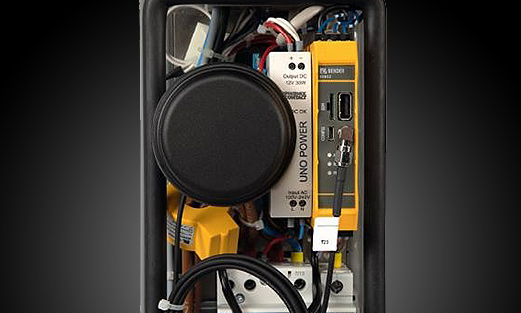
As the number of electric vehicles increases, so does the need for a nationwide charging infrastructure. An important area here is AC charging acc. to IEC 61851-1 via the existing private or public 230/400 V AC grid. The charge controller used, the brain of an AC charging station, is responsible for controlling, monitoring, authorising and billing the charging process.
In addition to the above-mentioned functionalities, an intelligent charge controller must also offer a certain degree of economic efficiency. Bender has addressed this problem with the new CC613 generation of charge controllers and once again significantly expanded the range of functions of its established CC612 charge controller.
For example, the new CC613 has an integrated Ethernet interface with which the charge controller can be directly and easily integrated into an existing Ethernet network. This offers customers a cost advantage, as no additional USB-Ethernet adapters are required. With the Ethernet interface, a networked charging infrastructure which allows for easy remote control and maintenance can now be set up directly and conveniently.
The charge controller also offers an external Modbus interface for connection to a higher-level system (energy management system) to enable remote control (start/stop of a charging process, max. charging current, etc.). Thus, a backend connection is not necessary.
For interaction with a backend system, the CC613 offers compatibility with the communication protocols OCPP 1.5 and 1.6 (JSON & SOAP).
With the dynamic load management (DLM) integrated in the CC613, the available power can be efficiently shared among all charging points without overloading the grid. This prevents damage to the electrical installation and prevents a possible fire hazard.
The DLM is characterised by the fact that no higher-level control is required for effective load distribution; load management is regulated internally via the controllers. The customer thus has the option of controlling larger charging infrastructures either locally via the controllers themselves or through an existing energy management system. This can have a very positive effect on the total cost of your networked charging infrastructure.
However, if a higher-level energy management system is available, the CC613 can be controlled by it, which ensures the integration of the charge controller into existing charging infrastructures.
For the application of plug & charge and for networking the charge controller with an energy management system, the CC613 also features the Powerline Communication (PLC) standard according to ISO/IEC 15118.
Regular software updates keep the CC613 future-proof and always up to date.
For more information, refer to: